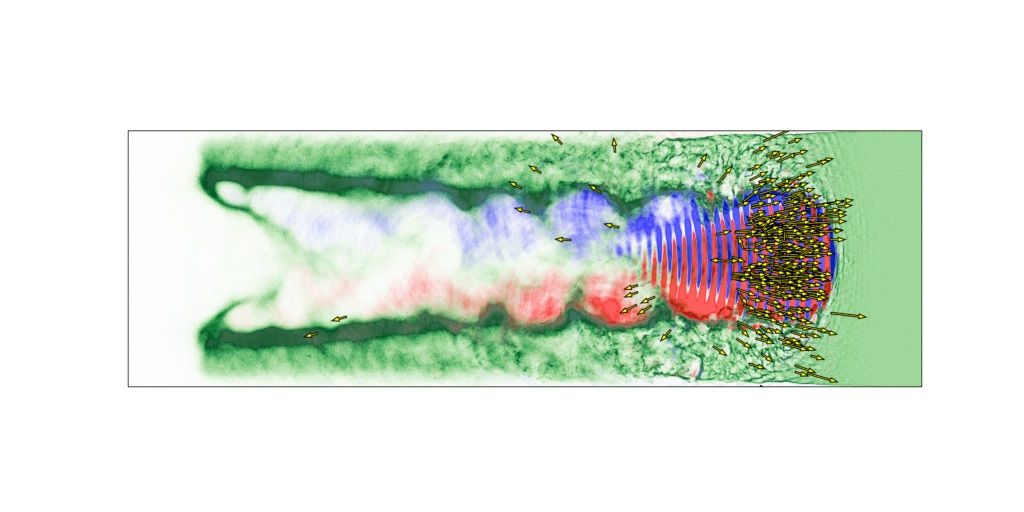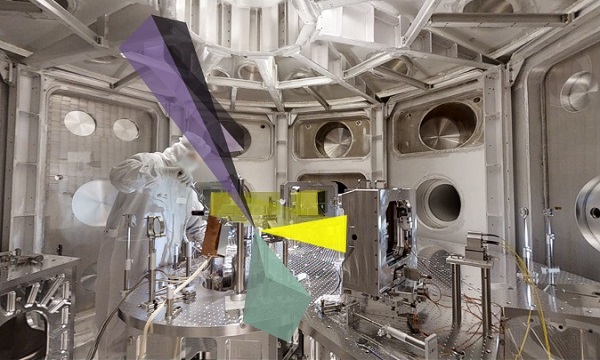A project that aims to demonstrate the efficient generation of dense gamma-ray beams will include experiments that are expected to provide the first statistically relevant study of gamma-ray generation using high-powered lasers. The researchers on the project hope that the work will open the way for secondary high-energy photon sources that can be used for a range of industrial applications. These include materials science, nuclear waste imaging, nuclear fuel assay, security, and high-resolution deep-penetration radiography in addition to fundamental physics studies.
The U.S. National Science Foundation (NSF) and the Czech Science Foundation (GACR) are funding the roughly $1 million project. Research is taking place at the the P3 (Plasma Physics Platform) installation at the multipetawatt ELI Beamlines facility in the Czech Republic.
The project takes advantage of an effect that occurs when electrons in a plasma are accelerated to near light speeds by a high-powered laser. The effect is called “relativistic transparency” as it causes a previously opaque dense plasma to become transparent to laser light. In this regime, extremely strong magnetic fields are generated as the laser propagates through the plasma. During this process, the relativistic electrons oscillate in the magnetic field, which in turn causes the emission of gamma rays, predominantly in the direction of the laser.
Alexey Arefiev, from the University of California, San Diego (UC San Diego), will lead the project. Arefiev’s group specializes in supercomputer simulations of intense light-matter interactions and developed the concept for the project.

Supercomputer simulation of energetic gamma-ray emission (yellow arrows) by a dense plasma (green) irradiated by a high-intensity laser beam (red and blue). The laser propagates from left to right, with the emitted photons flying in the same direction. The smooth blue and red regions represent a strong magnetic field generated by the plasma, whereas the oscillation region corresponds to the laser magnetic field. Courtesy of UC San Diego.
“It is very exciting that we are in a position to generate the sort of magnetic fields that previously only existed in extreme astrophysical objects, such as neutron stars,” Arefiev said. “The ability of the ELI Beamlines lasers to reach very high on-target intensity is the key to achieving this regime.”

The P3 (Plasma Physics Platform) installation at ELI Beamlines where the experiments will take place. Courtesy of ELI Beamlines.
Additionally, the experiments will benefit from recent advances in high-power laser facilities, which previously could only manage about one shot every hour, thereby limiting the amount of data that could be collected. Newer facilities like ELI Beamlines are capable of multiple shots per second, which allows statistical studies of laser-target interactions that were not possible just a few years ago.
“This collaboration between San Diego and ELI Beamlines is expected to be a major step forward to bring together the U.S. community and the ELI team for joint experiments,” said Stefan Weber, who will be leading experiments at ELI Beamlines with Florian Condamine, a beamline scientist at ELI Beamlines.